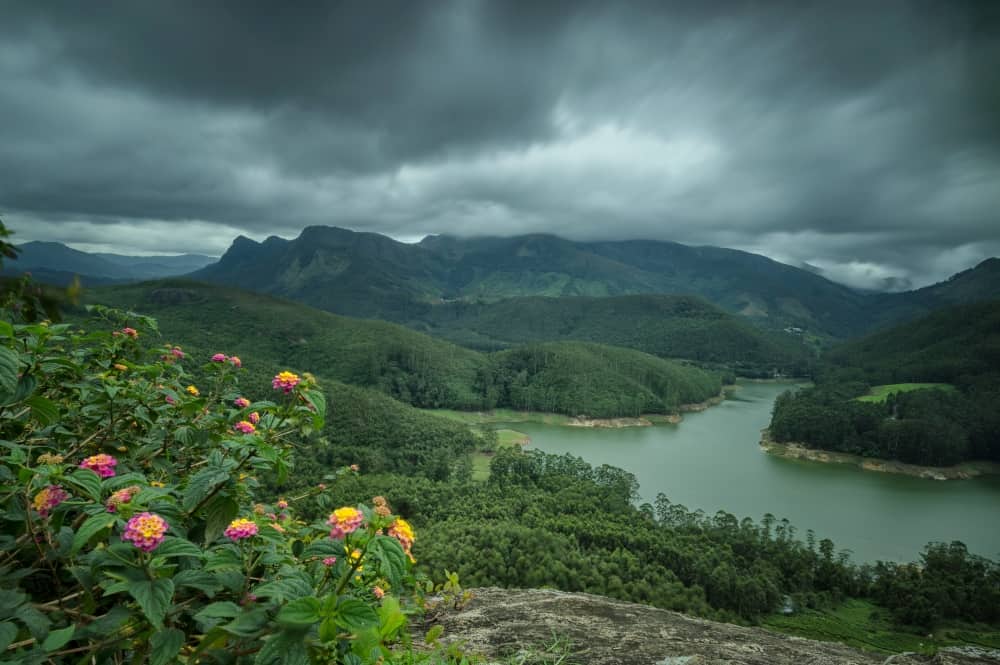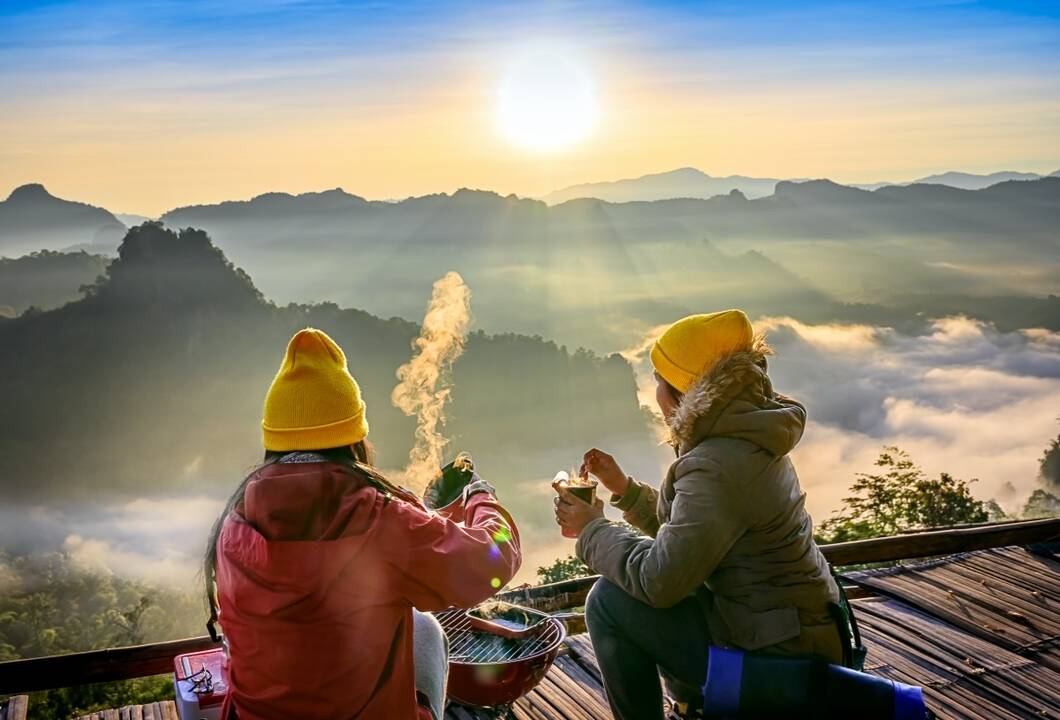India is a country of diversity—its geography varies from snow-clad mountains to sunbathed beaches, thick forests to expansive deserts. Such huge diversity demands seasonal planning for visitors who wish to experience the best out of their visit. The India eVisa now allows tourists to plan trips as per the season with ease and enter the country without any trouble of the classical visa process. Whatever your interests are - nature, culture, adventure, or spirituality - knowing India's seasons will enable you to plan the ideal time for your travel.
Following is an in-depth overview of seasonal travel in India, along with instructions on how to make the most of your experience through an eVisa.
Knowing India's Seasons
India has four seasons: summer, monsoon, autumn, and winter. Each of them has something different to offer, from climate to cultural experiences.
- Summer (March – June): Dry and hot in the majority of areas, perfect for hill stations.
- Monsoon (June – September): Heavy rains revitalize the countryside, greenery, and waterfalls.
- Autumn (October – November): Post-monsoon freshness, festivals, and moderate weather.
- Winter (December – February): Cool and dry, ideal for sightseeing, desert tours, and northern mountain hikes.
Summer Travel – Escape to the Hills

In summer, India's plains, including Delhi, Rajasthan, and central India, see scorching heat. The best time to visit India's hill stations and mountain states is during this time.
Best Summer Destinations:
- Shimla, Manali, and Dharamshala: Pleasant weather, trek routes, and scenic valleys in Himachal Pradesh.
- Darjeeling and Sikkim: Breathtaking Himalayan views, tea gardens, and Buddhist monasteries.
- Ladakh: Uncommon landscapes, clear skies, and adventure sports in the high-altitude desert.
Summer Travel Tips:
- Pack lightweight, light-colored clothing and sunscreen.
- Stay well-hydrated on sightseeing in cities or trekking trips.
- Think of hill stations for a cool break from the heat.
- Summer is ideal for families, singles, and adventure seekers seeking cool getaways to hill stations.
Monsoon Travel – Experience India's Greenery

The monsoon season turns India's world into a bright, green paradise. Even though the heavy rains may restrict beach or desert excursions, it is the perfect season to visit hill stations, tea gardens, and wildlife sanctuaries.
Best Monsoon Places to Visit:
- Kerala and Western Ghats: Scenic waterfalls, backwaters, and greenery.
- Goa's Monsoon Getaways: Less crowds, greenery, and calming waves.
- Munnar and Wayanad: Tea gardens and forested hills that bloom with rain.
- Wildlife Sanctuaries: Jim Corbett, Ranthambore, and Periyar are magical during the monsoon.
Tips for Monsoon Travel:
- Carry waterproof gear, umbrellas, and insect repellents.
- Local travel advisories should be checked, as a few hill roads could be slippery.
- Off-season benefits—less tourist crowd and reduced accommodation prices.
- Travel during the monsoon is perfect for nature enthusiasts, photographers, and those looking for peace amidst India's verdant landscapes.
Autumn Travel – Festivals and Clear Skies

Autumn, from October to November, is one of the finest periods to travel through most of India. The monsoon recedes, with clear skies, fresh air, and amiable temperatures. Autumn is also full of festivals and cultural activities.
Peak Autumn Places:
- Rajasthan: Travel to Jaipur, Jodhpur, and Udaipur without the summer sun. See palaces, forts, and cultural festivals.
- Varanasi and Khajuraho: Temple pilgrimages and religious tours in nice weather.
- Kerala: Experience backwaters and Ayurvedic vacations.
- North-East India: Kolkata's Durga Puja and Assam's Bihu are great festive cultural experiences.
Autumn Travel Tips:
- Book hotels in advance during the festival seasons.
- Pack light layers for fluctuating temperatures in northern and southern climates.
- Organize cultural activities such as fairs, boat excursions, and heritage walks.
- Autumn is the best balance of good weather and rich cultural exposure, making it suitable for families and cultural tourists.
Winter Travel – Chilly Climate Adventures

Winter, December to February, is one of the top seasons for traveling in India. The chilly, dry weather conditions are suitable for sightseeing and outdoor tours in most parts of the country.
Best Winter Destinations:
Rajasthan: Desert safari excursions in Jaisalmer, camel treks, and festivals such as the Jaipur Literature Festival.
Goa and Kerala: Beach vacations with warm, pleasant weather.
Agra and Delhi: Visit the Taj Mahal and historical sites without the grueling heat.
Himachal Pradesh and Uttarakhand: Snow trekking, skiing in Solang Valley, and peaceful hill station vacations.
Winter Travel Tips:
- Bring heavy clothing for northern India and lightweight layers for southern India.
- Relax while enjoying outdoor activities, wildlife safaris, and sightseeing.
- Advance book hotel rooms in popular destinations.
- Winter is ideal for vacationing with family, romantic travel, and visits to cultural heritage sites.
Special Precautions for Seasonal Travel

- Monsoon Travel Safety – Watch local weather forecasts and steer clear of landslides.
- Summer Heat – Try to avoid outdoor activities during the day in cities and plains.
- Winter Crowds – Tourist spots that are popular may get crowded, so book in advance.
- Festival Planning – Festivals such as Diwali, Holi, or Durga Puja can enrich your experience but might mean early reservations.
By coordinating your trip plans with the appropriate season, you can experience India at its best and yet keep away from challenging weather.
How the India eVisa Facilitates Seasonal Travel
India eVisa simplifies organizing seasonal travel. Visitors can apply online in their home country, get fast approval (usually in 3-5 business days), and enter India without the usual visa documentation.
Important Advantages for Seasonal Travelers:
- Free choice of entry points in India, including Delhi, Mumbai, Chennai, Kolkata, Bengaluru, and others.
- Can be used for multiple entries, so tourists can visit several areas within one trip.
- Eligible for stays of up to 60 days, perfect for visiting several season spots.
- Easy and fast application process, time and energy saved.
- Travelers can schedule visits around India's diverse seasons using the eVisa without any complications about visas, ensuring the experience is seamless and hassle-free.
How to Apply India eVisa for Seasonal Travel

- Eligibility – Ensure your nationality is eligible for an India eVisa and your passport is valid for at least 6 months.
- Requirement Documents – Gather a scanned passport, recent passport-sized photo, and other supporting documents.
- Visit Official Portal – Go to the official India eVisa website (indianvisaonline.gov.in) to start your application.
- Fill Up Form – Complete the India eVisa Application online form with accurate personal, passport, and travel details.
- Pay eVisa Fee – Submit the payment online via credit/debit card or other available methods.
- Receive & Print eVisa – After approval (usually 3–5 business days), download and print your eVisa to present at arrival.
Seasonal Highlights of India

- February – March: Early festivals, gardens in bloom, mild weather. Excellent for cultural touring and hill stations.
- Summer (March – June): Ideal for mountain hikes, Himalayan expeditions, and fleeing city heat.
- Monsoon (June – September): Greener landscapes, less tourists, visits to waterfalls, and wildlife safaris.
- Autumn (October – November): Festivals, mild temperatures, clear skies for photography and sightseeing.
- Winter (December – February): Pleasant weather throughout India, desert safaris, beaches, and snow sports in the north.
Tips for a Successful Seasonal Trip

- Research Destination Weather – Align your preferred activities with the season.
- Book in Advance – For festivals and peak seasons, places to stay get booked out early.
- Pack Wisely – Lightweight layers for summer, raincoat for monsoon, warm clothes for winter.
- Employ Local Guides – Make your experience and safety better, especially when visiting countryside and mountains.
- Stay Adaptable – Weather conditions can play havoc with itineraries; create cushion time for travel.
Seasonal planning makes your trip comfortable, enjoyable, and full of wonderful memories.
Conclusion
India is a land of immense diversity, and there is something special to experience in each season. From snowy mountains and desert safaris to backwaters and tropical beaches, India's geography and cultural experience change radically during different parts of the year. By knowing seasonal trends and making the necessary preparations, visitors can optimize their trip.
India eVisa also makes seasonal tourism easier, enabling visitors to experience various places without hassle of complicated visa processes. If you need to pursue winter in the Himalayas, attend cultural festivals in Rajasthan, unwind on Kerala's backwaters, or enjoy Goa's beaches, there is a suitable destination for each season in India.
Schedule your visit, obtain your eVisa, and indulge in the rich culture, vibrant colors, and natural wonder of India—a perfectly bespoke experience depending upon which season you select.


























